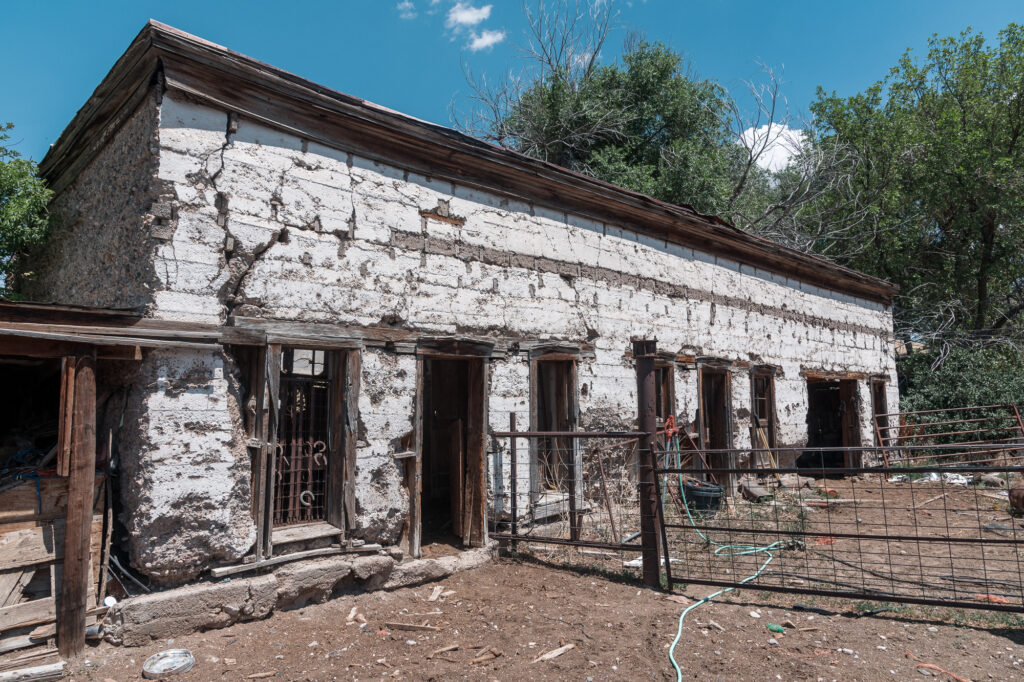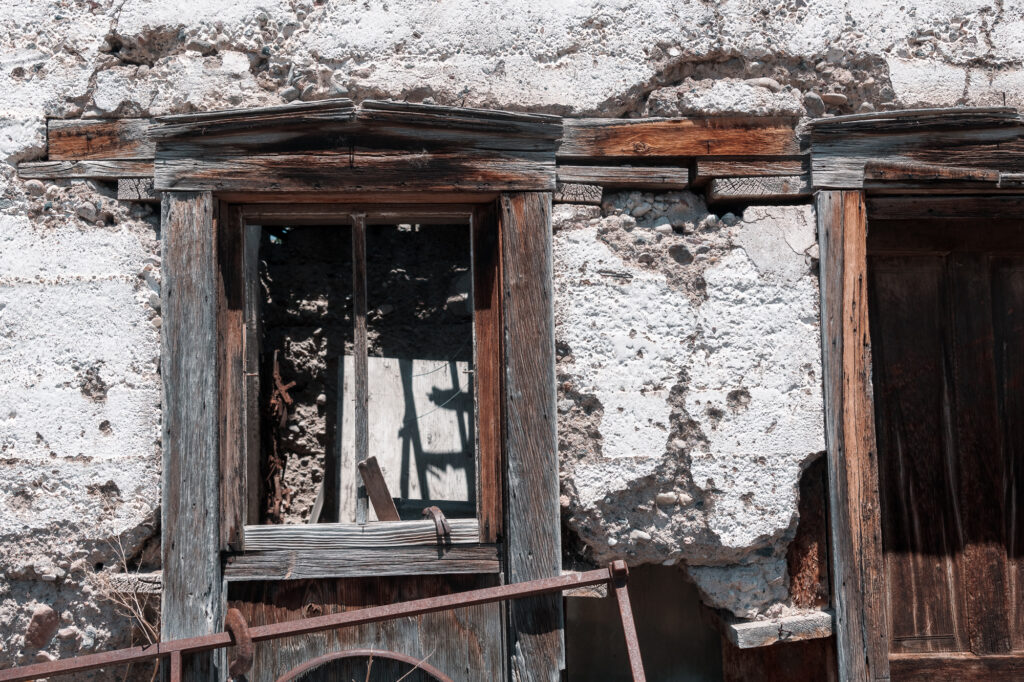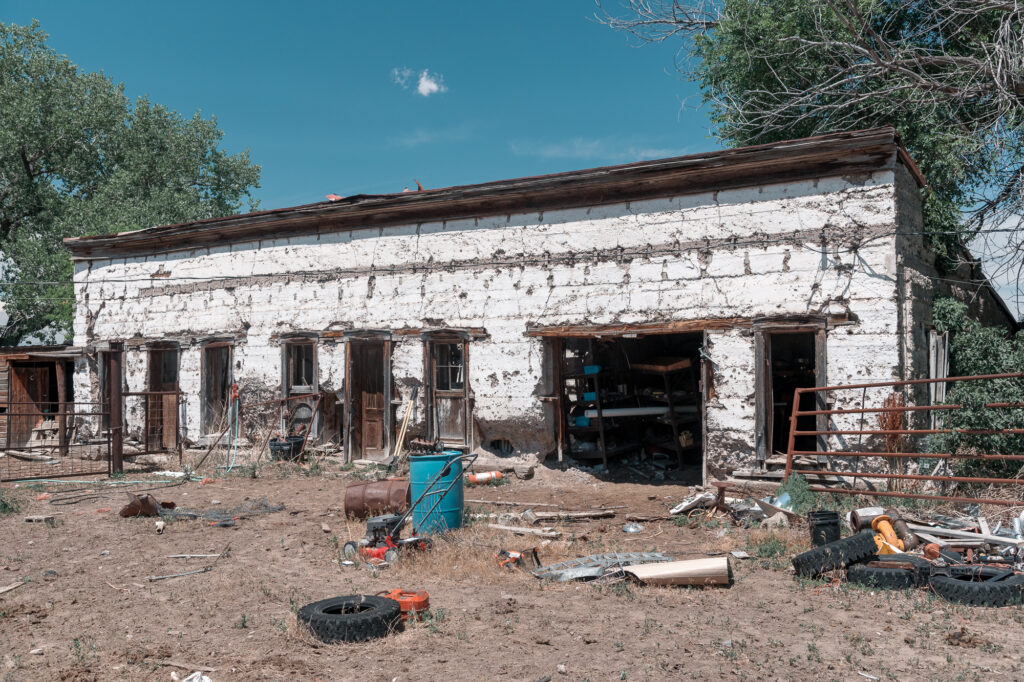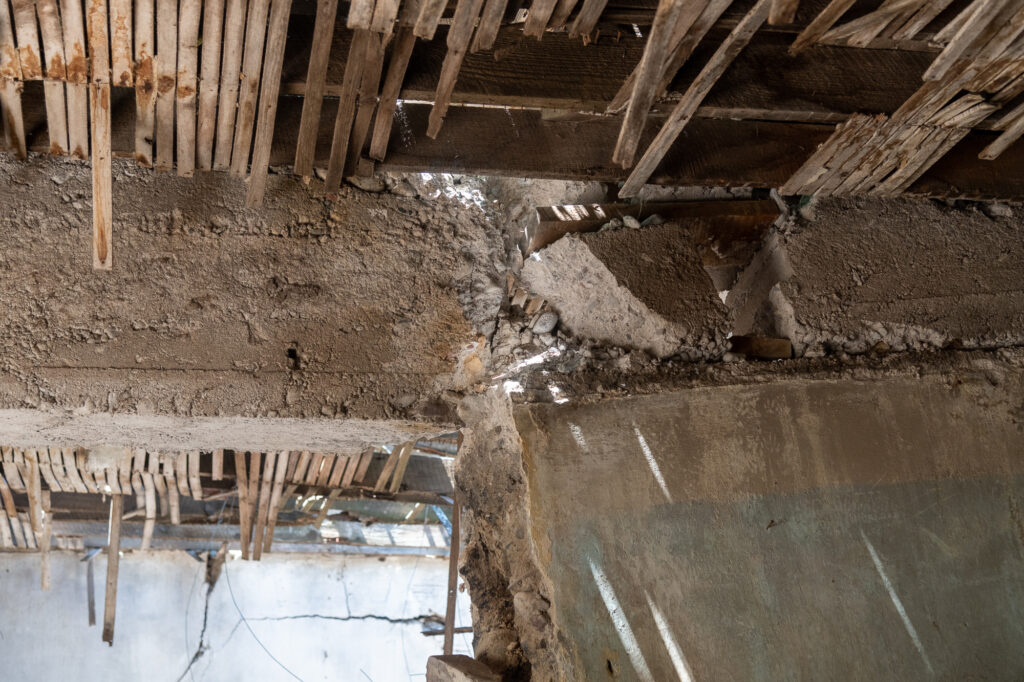| WYOMING |
While visiting Fort Laramie, take a detour to view another facet of its long and fascinating history at a lesser-known and more scandalous slice of Fort Laramie.
| THE REGIMENTAL MASCOT
Three miles west of historic Fort Laramie, which has been in existence since the U.S. government purchased an adobe trading post from the American Fur Company in 1849 for $4,000 (a sum equivalent to about $152,000 in 2022), lies a lesser-known and more scandalous piece of eastern Wyoming’s past, the Three Mile Hog Ranch. While the site is on private property, this location is well worth the slight detour down a maintained gravel road while visiting Fort Laramie to get a brief glimpse into yesteryear at one of the last remaining military bordellos left in the Western United States.
In 1873, two Swiss immigrants, Jules Ecoffey and Adolph Cuny, established a ranch on the banks of the Laramie River. Originally built as a trading post and saloon, in 1874, prostitutes were brought to service the soldiers garrisoned at nearby Fort Laramie. At all times, at least 10 of these ladies of the night were in residence. One of the most famous of these working girls were said to be Martha Jane Canary (pronounced “cannery,” not canary like the songbird, and often spelled Cannary), who was given the moniker sometime during the 1870s of “Calamity Jane.”
Colonel Henry Dodge once described her as she crossed the parade ground at Fort Laramie, clad in spurs, chaps, and a sombrero, as “a regimental mascot who didn’t know the meaning of the word morals.” She would later leave Fort Laramie with Colonel Dodge and the Black Hills Expedition, traveling a route now U.S. Highway 85 for South Dakota and riding into history.
The ranch soon became called the Three Mile Hog Ranch because it was three miles from Fort Laramie. It was easy walking distance for soldiers bent on drinking, gambling, and raising hell, even in the dark, icy grip of an eastern Wyoming winter, frostbitten toes and other appendages are damned, and the term “hog ranch” being a rather unflattering euphemism for a house of ill repute.
There were originally between 12 and 15 buildings on the Hog Ranch site, all erected between 1873 and 1885, including a billiard hall, eight two-room cabins, called cribs, where the ladies plied their trade, a blacksmith shop, a large sod corral with hay and grain available, and a barn with narrow vertical openings in the sides called loopholes, through which a rifle could be used to defend the property and its residents in case of attack from the Sioux, who had, for many legitimate reasons, been on the warpath ever since the Grattan Massacre of 1854.
| SCANDAL ON THE PLAINS
The ranch was described by the U.S. Army Lieutenant John Gregory Bourke, a prolific writer who kept diaries detailing his military service from 1872 until he died in 1896:
“Several times, on mild afternoons, Lieut. Schuyler and myself went riding, taking the best road out from the post. Three miles and there was a nest of ranches, Cooneys and Ecoffey’s and Wrights, tenanted by as hardened and depraved a set of witches as could be found on the face of the globe. It was a rum mill of the worst kind, with half a dozen Cyprians, virgins whose lamps were always burning brightly in expectancy of the coming of the bridegroom, and who lured to distraction the soldiers of the garrison. In all of my experience, I have never seen a lower, more beastly set of people of both sexes.”
By 1877, both Ecoffey and Cuny were dead. Ecoffey was killed in an attack by a man named Stonewall Spring on November 26, 1876. Cuny was murdered near present-day Chugwater, Wyoming, on July 22, 1877, shot in the back by an accomplice of Clark Pelton, a road agent who Cuny had been deputized to apprehend and transport to the jail in Laramie after the robbery of a stagecoach on the Cheyenne-Deadwood line ended in murder. Adolph Cuny is considered the first peace officer in Wyoming to die in the line of duty. He left behind a wife and seven children.
Even after the deaths of both of its founders, the site remained an important center for transportation and commerce, with a hotel operated by the Black Hills Stagecoach Company coexisting with the brothel, both remaining in continuous operation until the stage company abandoned the line in 1887.
Fort Laramie was abandoned, with the last two companies of the Seventh Infantry finally relieved of duties and marching off into the sunset on March 2, 1890. Its buildings and furniture were auctioned off by a detachment from Fort Robinson in Nebraska on April 9, 1890, for a total of $1,395, forcing the Three Mile Hog Ranch to finally give up the ship and sending its inmates searching for greener pastures in the red light districts of cities like Cheyenne, Sidney, and Deadwood.
Only two buildings were still standing when the Fort Laramie Hog Ranch was placed on the National Register of Historic places in 1975 – a wooden barn aside from the barn previously mentioned, and a U-shaped building, erected in 1873, made of lime grout, a primitive concrete mix of sand sourced from the nearby Laramie River and limestone, which is still used today by maintenance workers at Fort Laramie to fix holes and cracks on the historic structures there.
This building housed the bar, where soldiers spent their pay on rotgut whiskey, cheap beer, and card games when they weren’t entertained by the establishment’s women in their cribs.
On the nomination form to the National Register of Historic Places nomination form, the writer states:
“To understand just how very significant this establishment was, consider the hardships of soldiering on the frontier; the general lack of recreational outlets typical at frontier forts; a lack of eligible women for marriage, yet hundreds of available soldiers; the illegality of alcoholic beverages on military reservations periodically in the 1870s and 1880s; the only town of any size some 85 miles away; the monotony; the boredom. There was a definite need for a social outlet–it existed at the Three Mile Ranch.”
Today, the remains of the Fort Laramie Three-Mile Hog Ranch are crumbling, abandoned to time and the vagaries of Wyoming weather, but still well worth driving past as you leave Fort Laramie and travel down County Road 52/Road 90 as it follows the winding Laramie River on its course.
The ranch is now private property, so be courteous and watch for rattlesnakes. Keep your eyes peeled and your ears open, and, on the undercurrents of the never-ending Wyoming wind, you might hear distant music and laughter as soldiers still gamble and drink away their fortunes in the now abandoned buildings, the crack of Calamity Jane’s blacksnake whip as she earns her nickname, dressed in a soldier’s blue suit and straddling a mule on her way to her destiny in the Black Hills of South Dakota, or chance upon the spirits of one of the at least eight people who died on the property, many of them shot by Ecoffey or Cuny before they succumbed to violence.
Now grab your camera, hop in the car, and see another great part of eastern Wyoming.
| DIRECTIONS
The building believed to contain the Bar, the Kitchen, and the Black-smith shop is pictured in these images. It’s the only building still standing on the property precisely because it was built from thick-wall limestone grout.
The location is three miles west of Fort Laramie on County Road 90. Visitors are not welcome on the property, but it’s possible to see the area, not the actual building, from a public gravel road that turns North of the location.
| RESOURCES
Story by: Kathrine Rupe
Photography by: Hawk Buckman











